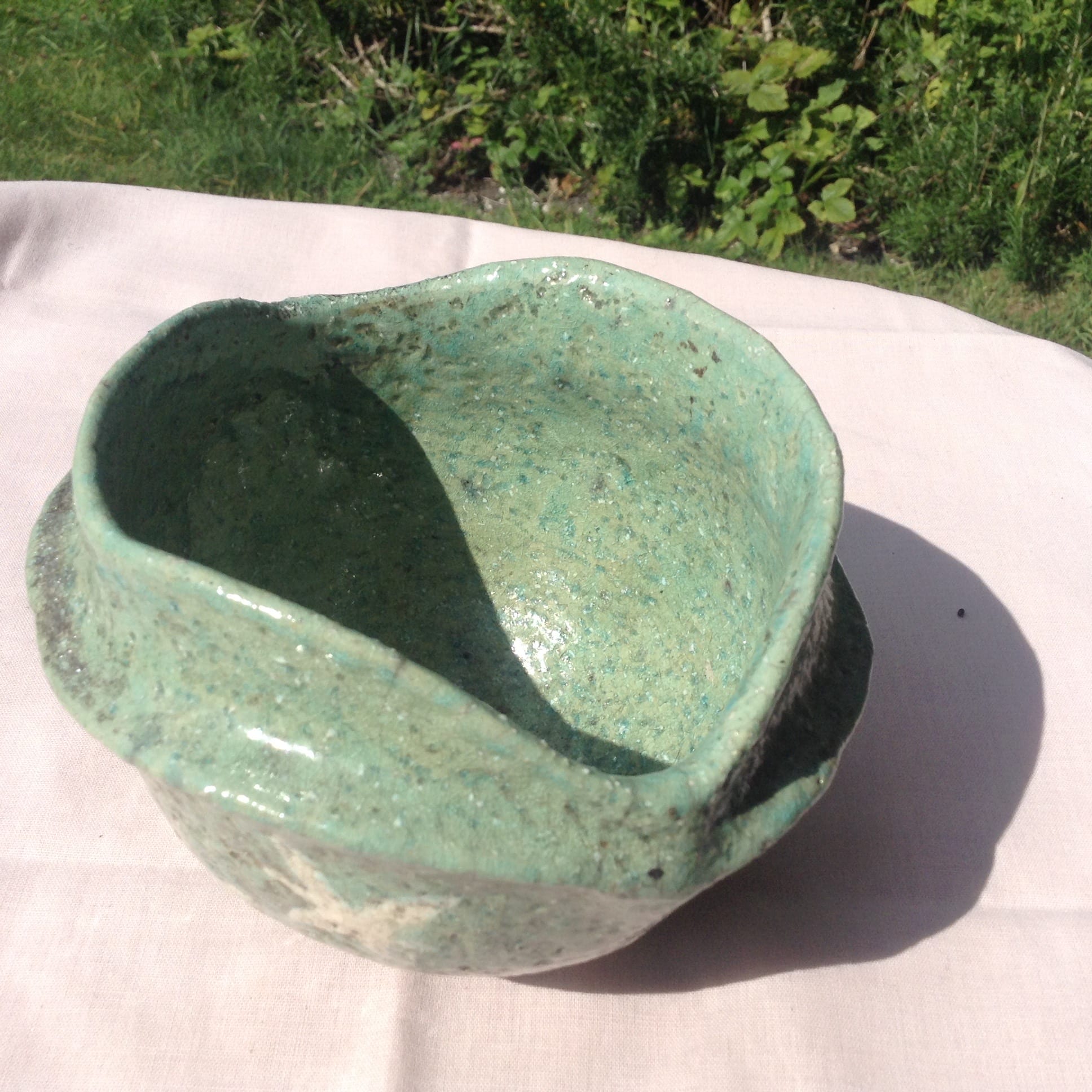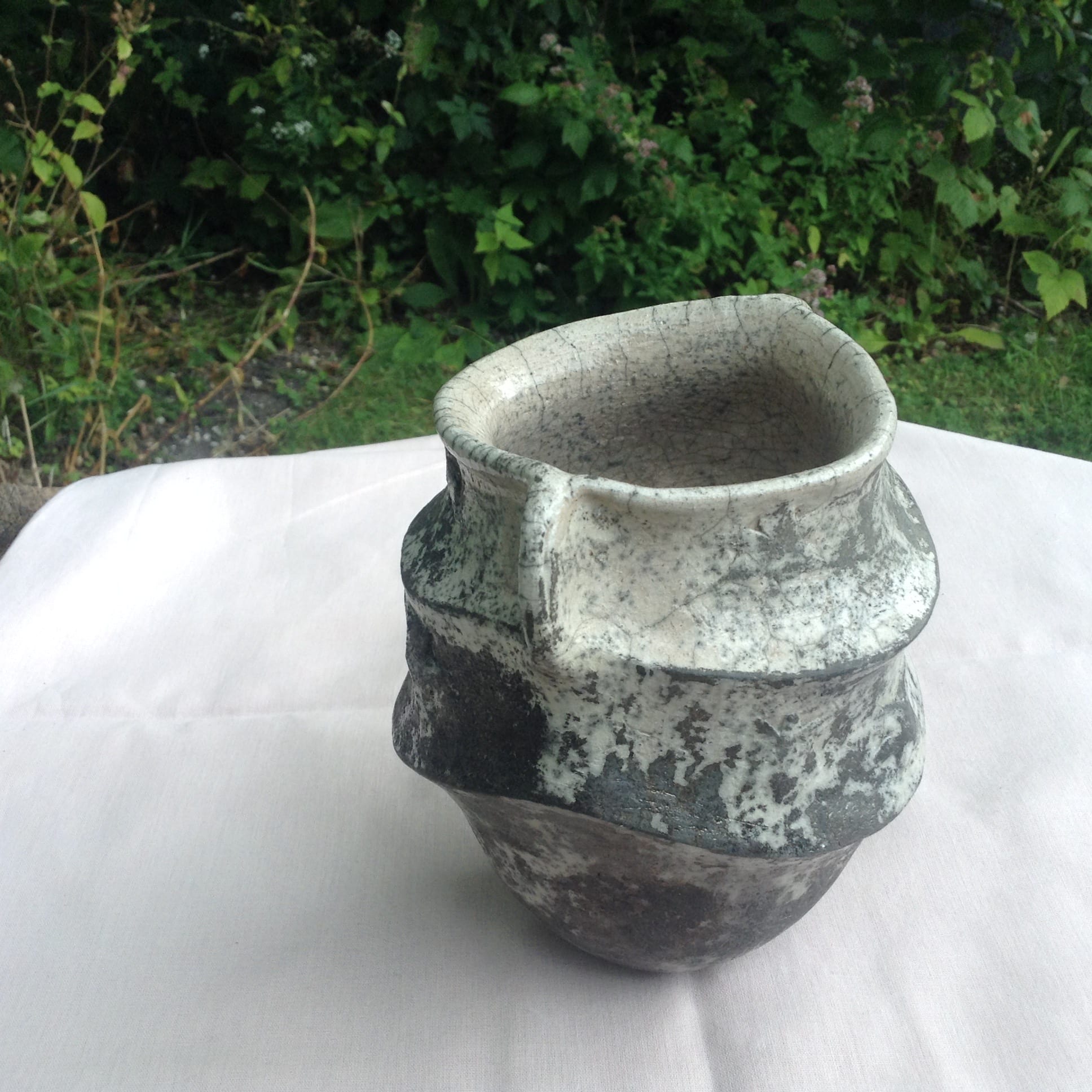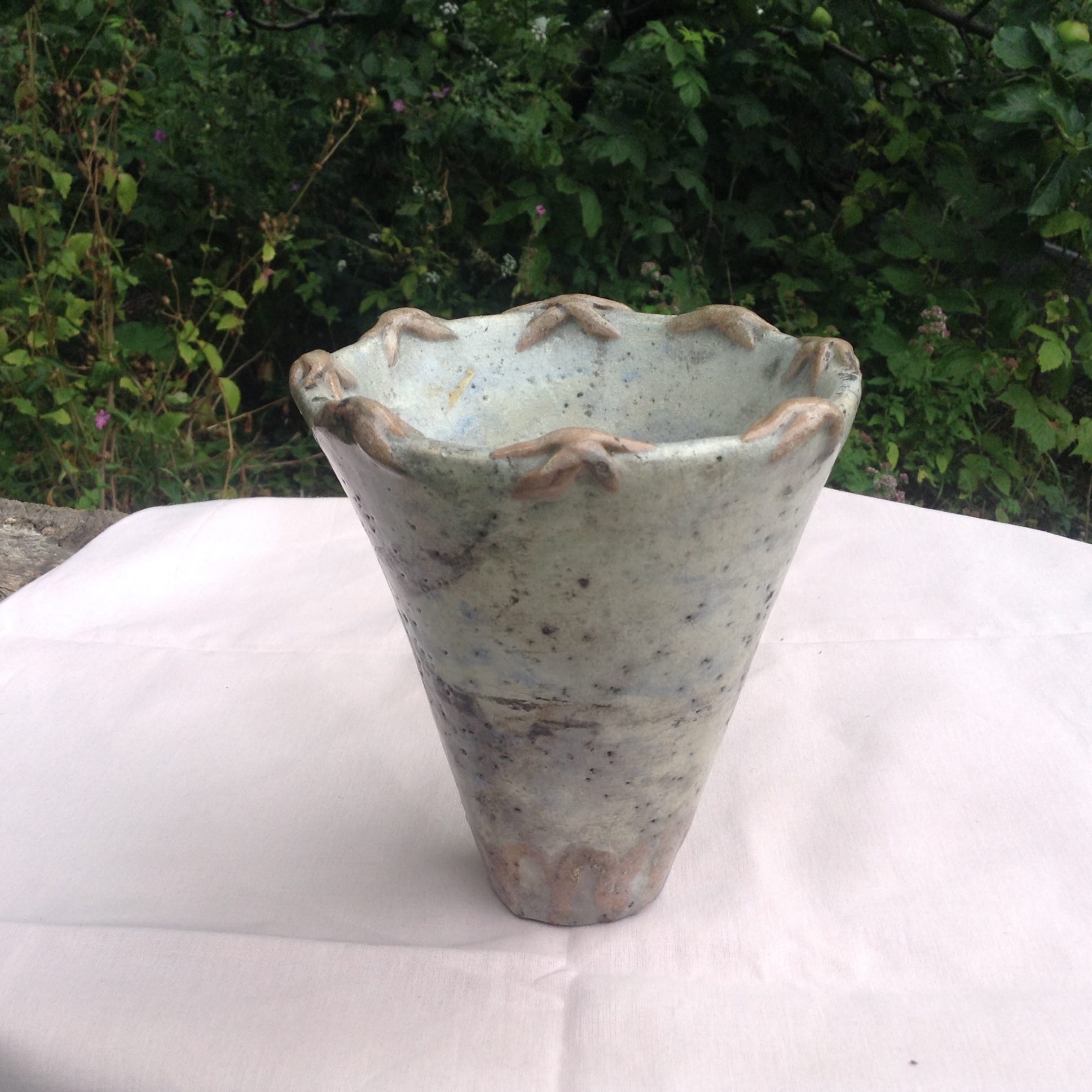Raku
Doing Raku is magical. I make my Millefiori work indoors in Winter months, and my pinch-pot Raku outside in summer, sitting on the lawn to work the ball of clay – alone – without any chatting. I start with a round ball of special rough clay (capable of withstanding a sudden thermal shock).
I enjoy pinching the clay ball up from the base into a bowl or vase – but more usually into a carinated form, creating a new edge, then adding a further carination, forming a further edge. This must relate to the final rim, itself becoming a further carination. All of this scraped and smoothed to achieve the tautness I like my Raku pots to have.
Once dried, they are bisque-fired slowly, then quickly, to reach between 900 or a 1000 degrees centigrade, then covered with a special crackle Raku glaze and usually re-fired in a Raku kiln outside.
Here, they are subjected to fierce fire inside the kiln before being grasped with tongs, and quickly buried inside a dustbin filled with sawdust and covered over with more sawdust – before the lid is replaced.
And because my Raku pieces have been coloured with mixtures of natural oxides, it means that when they are deprived of oxygen under the sawdust, the flames will draw instead on the coloured oxides from within the pot’s body, producing all kinds of subtle shades, gentle flecking or metallic sheens. This always gives back to their maker a surprise of one kind or another.
After around 5 to 20 minutes, the pot is retrieved from its sawdust bed only to be cruelly plunged into a bucket of water, causing its surface to craze and crizzle.
This imparts to the finished pot a ‘lifetime’ of aging all at once, clothing it with added dignity and personality.
Finally, the pot is washed and rubbed dry.
I love the surprise which my finished Raku vessels give back to me, their maker.



















